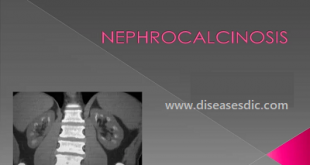What is a Nosebleed?
Simply put, a nosebleed is the loss of blood from the tissue that lines the inside of your nose. Nosebleeds (also called epistaxis) are common. Some 60% of people will have at least one nosebleed in their lifetime. The location of the nose in the middle of the face and the large number of blood vessels close to the surface in the lining of your nose make it an easy target for injury and nosebleeds.
Are there different kinds of nosebleed?
Yes. Nosebleeds are described by the site of the bleed. There are two main types and one is more serious than the other.
An anterior nosebleed starts in the front of the nose on the lower part of the wall that separates the two sides of the nose (called the septum). Capillaries and small blood vessels in this front area of the nose are fragile and can easily break and bleed. This is the most common type of nosebleed and is usually not serious. These nosebleeds are more common in children and are usually able to be treated at home.
A posterior nosebleed occurs deep inside the nose. This nosebleed is caused by a bleed in larger blood vessels in the back part of the nose near the throat. This can be a more serious nosebleed than an anterior nosebleed. It can result in heavy bleeding, which may flow down the back of the throat. You may need medical attention right away for this type of nosebleed. This type of nosebleed is more common in adults.
Pathophysiology
Bleeding typically occurs when the mucosa is eroded and vessels become exposed and subsequently break.
More than 90% of bleeds occur anteriorly and arise from Little’s area, where the Kiesselbach plexus forms on the septum. The Kiesselbach plexus is where vessels from both the ICA (anterior and posterior ethmoidal arteries) and the ECA (sphenopalatine and branches of the internal maxillary arteries) converge. These capillary or venous bleeds provide a constant ooze, rather than the profuse pumping of blood observed from an arterial origin. Anterior bleeding may also originate anterior to the inferior turbinate.
Posterior bleeds arise further back in the nasal cavity, are usually more profuse, and are often of arterial origin (eg, from branches of the sphenopalatine artery in the posterior nasal cavity or nasopharynx). A posterior source presents a greater risk of airway compromise, aspiration of blood, and greater difficulty controlling bleeding.
What Causes Nosebleed?
Most nosebleeds do not have an easily identifiable cause. However, trauma to the nose is a very common cause of nosebleeds. Nosebleeds can be caused by trauma to the outside of the nose from a blow to the face, or trauma to the inside of the nose from nose picking. Other conditions that predispose a person to nosebleeds include:
- Exposure to warm, dry air for prolonged periods of time,
- Nasal and sinus infections,
- Allergic rhinitis,
- Nasal foreign body (object stuck in the nose),
- Vigorous nose blowing,
- Nasal surgery,
- Deviated or perforated nasal septum, and
- Cocaine use.
Less commonly, an underlying disease process or taking certain medications may cause a nosebleed or make it more difficult to control.
- Inability of the blood to clot is most often due to blood-thinning medications such as warfarin (Coumadin), clopidogrel bisulfate (Plavix), nonsteroidal anti-inflammatory drugs (NSAIDs), or aspirin.
- Topical nasal medications, such as corticosteroids and antihistamines, may sometimes lead to nosebleeds.
- Liver disease, chronic alcohol abuse, kidney disease, platelet disorders, and inherited blood clotting disorders can also interfere with blood clotting and predispose to nosebleeds.
- Vascular malformations in the nose and nasal tumors are rare causes of nosebleeds.
- High blood pressure may contribute to bleeding, but is rarely the sole reason for a nosebleed. It is often the anxiety associated with the nosebleed that leads to the elevation in blood pressure.
Which children are at risk for a Nosebleed?
A child may be more at risk for nosebleed if he or she:
- Lives in a dry climate
- Picks his or her nose
- Has allergies
- Has a cold
Warning signs and symptoms
In people with a nosebleed, certain symptoms and characteristics are cause for concern. They include
- Signs of excessive blood loss (such as weakness, fainting, or dizziness when standing up)
- Use of drugs that interfere with blood clotting
- Signs of a bleeding disorder or a known bleeding disorder (such as hemophilia)
- Several recent episodes of nosebleeds, particularly with no clear cause
The most common drugs that interfere with blood clotting include aspirin, clopidogrel, warfarin, and newer drugs taken by mouth (called novel oral anticoagulant drugs), such as rivaroxiban and apixaban.
Signs of a bleeding disorder include
- Numerous small, purplish spots on the skin (petechiae)
- Many large bruises
- Easily bleeding gums
- Bloody or tarry stools
- Coughing up blood
- Blood in the urine
- Excess bleeding while brushing the teeth, having blood tests, or suffering minor cuts
- Heavy menstrual periods in women
Complications
Complications of epistaxis may include the following:
- Sinusitis
- Septal hematoma/perforation
- External nasal deformity
- Mucosal pressure necrosis
- Vasovagal episode
- Balloon migration
- Aspiration
Diagnosing a Nosebleed
If you seek medical attention for a nosebleed, your doctor will conduct a physical examination to determine a cause. They’ll check your nose for signs of a foreign object. They’ll also ask questions about your medical history and current medications.
Tell your doctor about any other symptoms you’ve and any recent injuries. There’s no single test to determine the cause of a nosebleed. However, your doctor might use diagnostic tests to find the cause. These tests include:
- Complete Blood Count (CBC), which is a blood test to check for blood disorders
- Partial Thromboplastin Time (PTT), which is a blood test that checks how long it takes for your blood to clot
- Nasal Endoscopy
- CT scan of the nose
- X-ray of the face and nose
What are the treatments for Nosebleed?
Treatments depend on the cause and could include:
- Nasal packing. Gauze, special nasal sponges or foam or an inflatable latex balloon is inserted into your nose to create pressure at the site of the bleed. The material is often left in place for 24 to 48 hours before being removed by a healthcare professional.
- Cauterization. This procedure involves applying a chemical substance (silver nitrate) or heat energy (electrocautery) to seal the bleeding blood vessel. A local anesthetic is sprayed in the nostril first to numb the inside of your nose.
- Medication adjustments/new prescriptions. Reducing or stopping the amount of blood thinning medications can be helpful. In addition, medications for controlling blood pressure may be necessary. Tranexamic (Lystedaâ), a medication to help blood clot, may be prescribed.
- Foreign body removal if this is the cause of the nose bleed.
- Surgical repair of a broken nose or correction of a deviated septum if this is the cause of the nosebleed.
- Ligation. In this procedure, the culprit blood vessel is tied off to stop the bleeding.
Home remedies
The first step is to stop the bleeding:
- Sit down and pinch the soft parts of the nose firmly, breathe through the mouth.
- Lean forward (not backward) to prevent blood from draining into the sinuses and throat, which can result in inhaling the blood or gagging.
- Sit upright so that the head is higher than the heart; this reduces blood pressure and slows further bleeding.
- Continue putting pressure on the nose, leaning forward, and sitting upright for a minimum of 5 minutes and up to 20 minutes, so that the blood clots. If bleeding persists for more than 20 minutes, medical attention is required.
- Apply an ice pack to the nose and cheek to soothe the area and avoid strenuous activity for the next few days.
Individuals are recommended to seek medical attention if they suffer from frequent nosebleeds (it could be an indication of an underlying problem), had an injury to the head, or take anticoagulants (blood thinning medications) and the bleeding does not stop.
Can I prevent Nosebleed?
- When you blow your nose (especially when you have a cold), do so gently into a soft tissue. Don’t blow forcefully or pick your nose.
- Your doctor may recommend a cool-mist humidifier to moisten your indoor air.
- Keep the inside of your nose moist with saline (saltwater) nasal spray or gel, or dab petroleum jelly or antibiotic ointment gently around the opening of the nostrils.
- Wear protective athletic equipment when playing sports that could cause injury to the nose.
An occasional nosebleed may make you worry, but there’s no need to panic — now you know what to do!
 Diseases Treatments Dictionary This is complete solution to read all diseases treatments Which covers Prevention, Causes, Symptoms, Medical Terms, Drugs, Prescription, Natural Remedies with cures and Treatments. Most of the common diseases were listed in names, split with categories.
Diseases Treatments Dictionary This is complete solution to read all diseases treatments Which covers Prevention, Causes, Symptoms, Medical Terms, Drugs, Prescription, Natural Remedies with cures and Treatments. Most of the common diseases were listed in names, split with categories.







